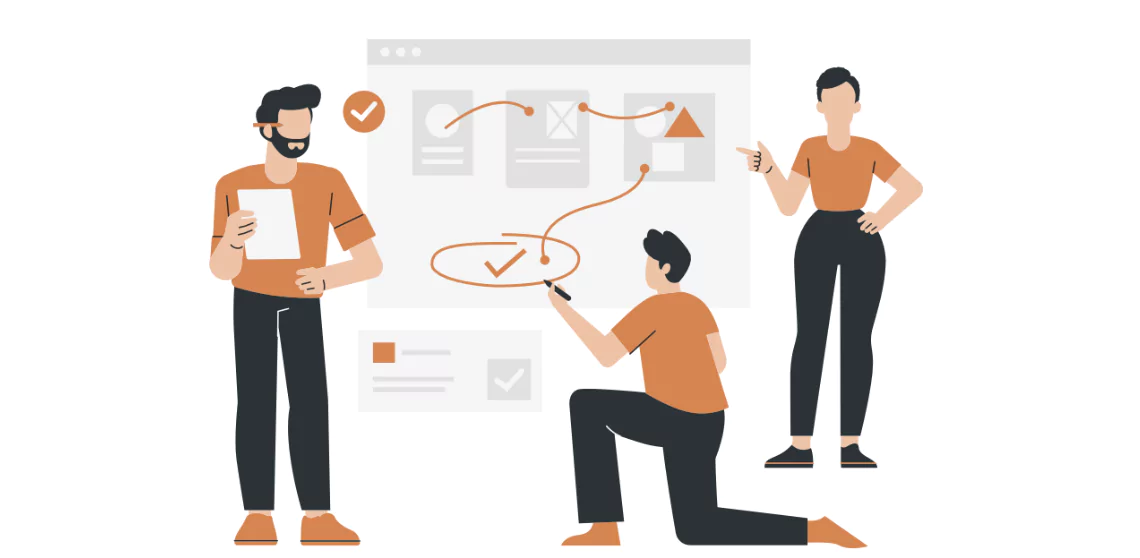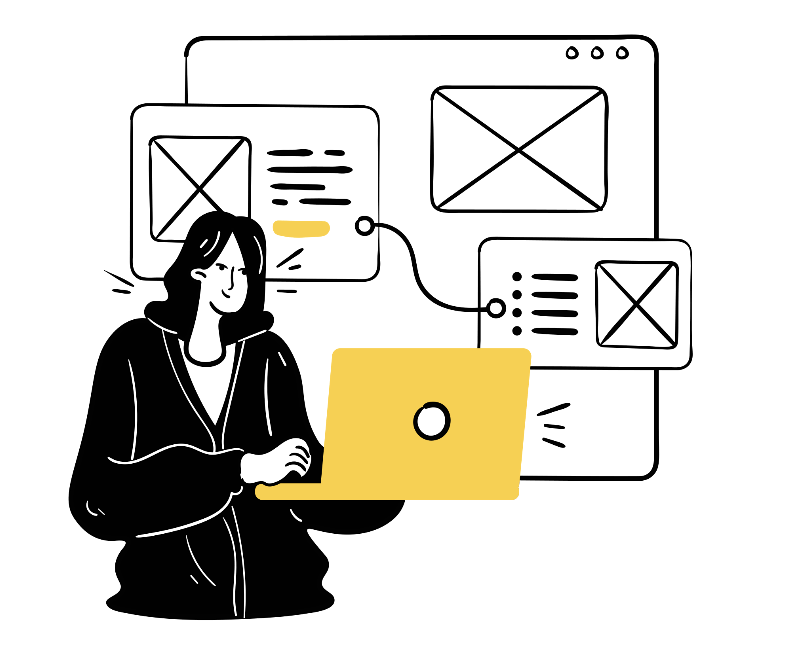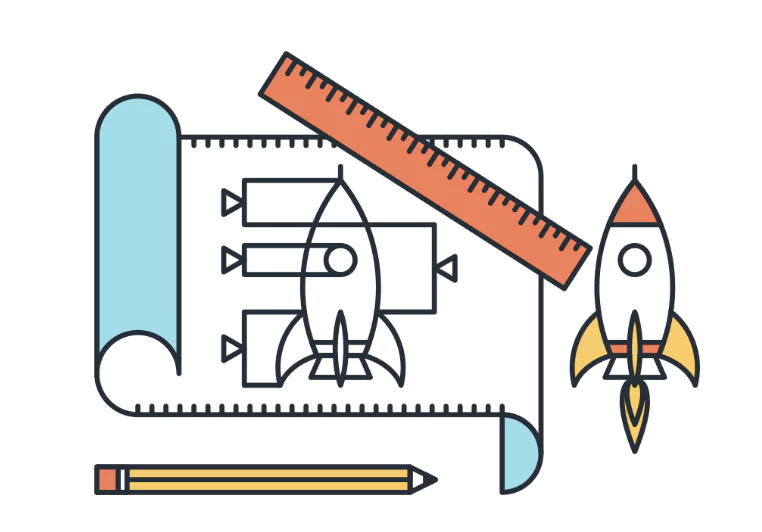Have you heard about the product prototype variant of a product? Well, these prototypes are one of the simplest versions of the product. It provides real feedback and refines the solution slightly more to better align with the interests of the target users. With a product prototype, the visual and technical constraints can be cleared, along with the feasibility of the idea behind the product.
The team can use prototypes to make changes in design before it becomes final and is moved to the development stage. Here, we will learn more about prototypes in detail.
Product Prototype Definition
A prototype is a primary version, which is a simplified version of a product or system to gather information, such as feedback, test ideas, and refine for an end product. Prototyping is a process that is carried out before the development of the product. It ensures that the product meets the expectations and needs of the user.

This process is basically done to first test the product or the concept behind building the product. There are many fields where prototype is used, such as software programming, designing, electronics, and more. It is a very essential process in product development as it is used as a final testing phase to make an informed decision on the development of the product.
Why Build Product Prototypes?
Product prototypes are the ideas which is also referred to as samples of the product built for testing purposes. It is built to understand whether the product can solve the problems of the target users smoothly and effectively.
It allows you to build simple, small, scalable prototypes of your product, which can be used to test, record, or observe the performance of the product at various levels. They do not need to be complete and perfectly finished, or they are just a part of your product, which can help you understand the solution your product can provide to the users. Prototypes are a quick and effective way of implementing an early design opportunity, which helps businesses in moving ahead with a project or discarding it before the development starts.
- Prototypes of a product can help understand the feasibility of a product, where a process or stage is easy to implement, while understanding the physical, technical, and other constraints of the product.
- It can be used to enhance the quality of a website by conducting testing, navigation, accessibility, and placement of different elements in the website.
- It is very effective in presenting the idea to the customers who can possibly buy the product in the future.
- It is generally done before the launch of the product, where all the ideas are put into action.
- It ensures that the product meets the needs of the user and solves their pain points.
- It also reduces the risk of product failure, where all the possibilities regarding the development of the product are checked and verified before starting the development stage.
- With a prototype business can extract proper feedback from customers and use their suggestions to make improvements in the product at a later stage.
- With the help of a product prototypes design team, crucial information about the product to gain an idea about the implementation and bring noticeable benefits to the product.
- Prototypes are easy to create once the logic and functionality are clear.
Read More: Product Delivery: The Ultimate Guide
Types of Product Prototypes

There are various types of prototypes built for products that various companies use before they put their product in the development phase.
1. Concept Product Prototype
A concept prototype is a very early representation of the idea behind the product, which can be used to communicate the vision to everyone associated with the product. However, not having any real functionality means no element is working; it’s just a mere sketch representation of the product.
The major objective is to validate the idea or the initial concept before moving ahead to invest in a particular idea behind the product. It is generally used during brainstorming or planning sessions of product development.
2. Visual type Prototype
A Visual type product prototype is used to focus completely on the product look and feel without including the major functionality of the elements or the overall product. It basically lays emphasis on the design aesthetics, including the size, color, and shape of the product. This prototype does not work for real. It is just a method used which product owners for feedback and presentation of the product.
3. Working Prototype
Unlike other prototypes, these prototypes are functional in nature, which means they execute some of the functionality of the product to be apart from just the visual features. The product team can judge the technical performance, features, and other important aspects of the product using this prototype.
4. User Experience Product Prototype
This is a design-oriented prototype that can be used to streamline the flow and user expectations of the digital product. It highly resembles the prototypes and mockups, which can be clicked or expanded for users to understand the flow of the website.
These prototypes are very useful in usability testing and help in collecting real feedback and ensuring that the final product is user-friendly and draws customer satisfaction.
5. Proof-of-Concept (PoC)
This prototype can be used to test the technical feasibility of the product, collecting neccessary proof of the idea and implementation. It can be typical and might contain only a few or a limited number of functions of an overall product.
The main objective of this prototype is to determine whether a certain technology, process, or solution can actually be implemented in real time or not. PoCs are often built early in development to reduce any risk of product failure and validate the idea behind the product.
6. Breadboard Prototype
You can find Breadboard product prototypes in electronics development, used to understand the circuits before finally implementing them. These setups particularly involve the usage of components like resistors, capacitors, and microcontrollers on a reusable breadboard platform.
They are very suitable for rapid testing and iteration, helping engineers troubleshoot and optimize circuit designs without soldering.
Read More: What is a Product Recall? Quality Recall Process
7. Alpha Prototype
This is one of the earliest versions of product development where both the visibility and functionality of the product are given preference. This is not an end product and hence might contain bugs. It is used for testing purposes by developers, designers, and other core team members. During alpha testing, feedback gathered helps identify and fix major issues before releasing the product to external users.
8. Beta Prototype
A beta prototype is a very near-final prototype of the end product, which contains major features and optimised performance of the product. It is also released to the public or some selected pre-existing users for real-world testing and feedback. The goal is to uncover remaining usability or performance issues, gather user insights, and make final adjustments before full-scale launch.
9. Pre-Production Prototype
This prototype is also called as final or end product, which is one stage below mass production. It feels and looks exactly like the end or finished product. This prototype ensures everything is in place for a smooth product launch and allows for final quality assurance checks.
Read More: What Does a Product Marketing Manager Do? 2025 Career Guide
Benefits of Product Prototypes

Let us analyse some of the major benefits behind the working of a product prototype below.
- With a product prototype in place, ideas can be validated before investing in the full development of the product.
- It turns the product idea into an interactive form, which can help in assessing whether the idea solves the problem of the users.
- Iterations help product design with rapid experimentation using the product prototype.
- Product prototype ensures that the final product is more polished and aligned with the user’s expectations.
- With prototypes, collecting users’ real feedback becomes easy, making it easier for clients, teams, and investors to understand the idea.
- It saves resources and time by preventing major redesigns in the product.
- It boosts the confidence of the client or investor by providing a high-pitched concept that demonstrates the idea.
Also Read:
- Product Analyst Career Guide: Skills, Salary, Steps
- What Is Product Failure? Definition and Prevention Tips
- New Product : Concept, Importance and Challenges
- What is Product Pricing? Objectives, Types, and Factors
Learn Product Management With PW Skills
PW Skills is offering students the latest and trending Product Management Course, completely perfect for anyone who wants to start their career in product management.
This complete product management course is based on the latest industry curriculum, including interactive learning tutorials, live sessions, real-world capstone projects, case studies, interview preparation, and more.
Need More Perks?
- Get module-wise industry-based case studies for better understanding and practical experience
- Build PRD from scratch with the product mindset and effective practice in mind
- Get real world capstone projects to apply the skills you learned during the course.
- Boost your productivity by 10x with AI in product management roles.
- Prepare for your bright future in product management with career support and interview preparation.
- Get diverse opportunities in a product management role in top companies.
Product Prototype FAQs
Q1. What is a prototype?
Ans: A prototype is a primary version, which is a simplified version of a product or system, to gather information such as feedback, test ideas, and refine for a final end product.
Q2. Why use prototypes?
Ans: Prototypes are the ideas which is also referred to as samples of the product, basically built for testing purposes. It is built to understand whether the product can solve the problems of the target users smoothly and effectively.
Q3. What is the Pre-production prototype?
Ans: The pre-production prototype is the final phase of the product just before the mass manufacturing of the product starts. It ensures everything is in place to conduct the product launch of the product.
Q4. Which is an example of a prototype?
Ans: In designing wireframes can be considered as an example of a prototype used for websites, applications, and software. It is the simplest version of the idea behind the product, which might be put into execution.

